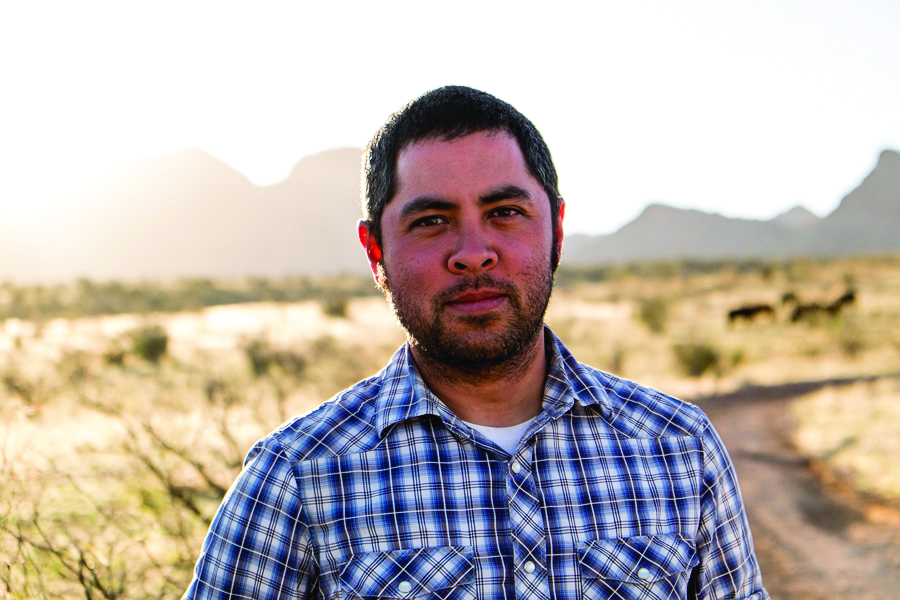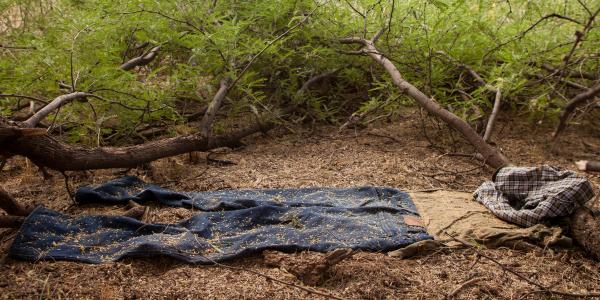Tabea Linhard is a professor of Spanish, comparative literature, and international and area studies.
It is late 2019, and it has been 32 years since Gloria Anzaldúa described her home as a “thin edge of barbwire,” three decades since the Berlin Wall fell, and three years since the last election in the U.S. has turned rhetoric about a big, beautiful wall into a strange reality. Indeed, while 11 countries had border fences and walls in 1989, now they exist in 70 nations, and counting. In this climate then, the question of how we understand and talk about borders and those who cross them is as timely as it is complex.
Jason De León, the speaker for this year’s Holocaust Memorial Lecture, provides a compelling perspective on this question, as his work shifts our attention from man-made barriers to geographical ones. De León uses ethnographic analysis, forensic science and archaeological research to study the lives and deaths of migrants in the Sonoran Desert, a region where temperatures routinely reach the triple digits. Even though migrants may die from dehydration or exposure to the elements, deaths in the borderlands are not acts of nature but the consequence of specific strategies like “Prevention through Deterrence.” Stated differently, fortifying borders does not stop the movements of migrants, but instead leads them to undertake far riskier journeys. Thus, sophisticated weaponry like the automatic firing devices (Selbstschussanlagen) that were part of the Berlin Wall are not necessary in this context: “Migrants have been purposefully funneled into the desert through various enforcement practices, a tactic that has enabled Border Patrol to outsource the work of punishment to actants such as mountains and extreme temperatures.”

The current crisis in the Mediterranean — one of the cruelest realities of our times with its unfathomable tolls and (mostly nameless) dead children — also comes to mind here. The term “crisis,” however, is somewhat of a misnomer. “Crisis,” is etymologically linked to “decision” and also to “turning point.” In that sense, there may be no such thing as a crisis in the Mediterranean. The current situation along the central, eastern and western Mediterranean routes is uncertain, and even though specific states, institutions, NGOs and individuals are constantly making decisions that sometimes can and sometimes cannot prevent deaths at sea, no turning point is evident. Instead, we are witnessing a senseless repetition, perhaps best depicted in Ai Weiwei’s most “Mediterranean” work: his Odyssey (2016), on display at the Mildred Lane Kemper Art Museum until January 5.
While it is often made to look that way, neither the Mediterranean Sea nor the Sonoran Desert are swallowing up lives and spitting out corpses. Instead, these deaths result from specific border policies or, as the story of the 2012 “Left-to-Die Boat” attests to, from a lack of coherent regulations and from an utter disregard for human life. “Fortress Europe” — an expression that originally referred to Nazi-occupied areas of the continent, and that today is invoked in the context of the politics of migration in the EU — has its share of engineers. Migrants have lost lives and loved ones as a consequence of these designs.

It is late 2019 and Washington University’s Holocaust Memorial Lecture is in its 30th year. Since 1989, talks have customarily alternated between lectures on the Holocaust, specifically, and on other histories of genocide, violence and mass trauma more generally. Many of the talks have addressed how to publicly mourn the lost, and this year’s lecture will also involve this issue. The traveling exhibit and participatory art project Hostile Terrain, sponsored and organized by The Undocumented Migration Project (founded by De León) represents one way to publicly grieve deaths in the borderlands. The project includes an installation that consists of handwritten toe tags that map deaths at border-crossing. Moreover, across the world, other projects (a cemetery in Tunisia, an underwater museum off the coast of Lanzarote in the Canary Islands) are envisioned to mourn those who died in the Mediterranean. There may be no turning point in sight, yet there are myriad ways to grieve in public those who died on land and sea. These forms of public mourning will continue to be a tragic necessity as long as border enforcement strategies push women, men and children to risk their lives in “hostile terrains.”
RELATED EVENT
Holocaust Memorial Lecture
“The Land of Open Graves: Understanding the Current Politics of Migrant Life and Death along the US-Mexico Border”
Jason De León, Professor of Anthropology and Chicana/o Studies at the University of California, Los Angeles
WEDNESDAY, DECEMBER 4 | 5 PM
WOMEN’S BUILDING FORMAL LOUNGE
Since the mid-1990s, the U.S. federal government has relied on a border enforcement strategy known as “Prevention Through Deterrence.” Using various security infrastructure and techniques of surveillance, this strategy funnels undocumented migrants toward remote and rugged terrain such as the Sonoran Desert of Arizona with the hope that mountain ranges, extreme temperatures and other “natural” obstacles will deter people from unauthorized entry. Hundreds of people perish annually while undertaking this dangerous activity. Since 2009, the Undocumented Migration Project has used a combination of forensic, archaeological and ethnographic approaches to understand the various forms of violence that characterize the social process of clandestine migration. In this presentation, De León focuses on what happens to the bodies of migrants who die in the desert. Drawing on the archaeological concept of taphonomy (i.e., the various post-mortem processes that impact biological remains), he argues that the way that bodies decompose in this environment is a form of hidden political violence that has deep ideological roots. Using ethnographic data from New York and Ecuador, he focuses on the families of people who have lost loved ones in the desert and demonstrates how the post-mortem destruction of migrant corpses creates devastating forms of long-lasting trauma.




